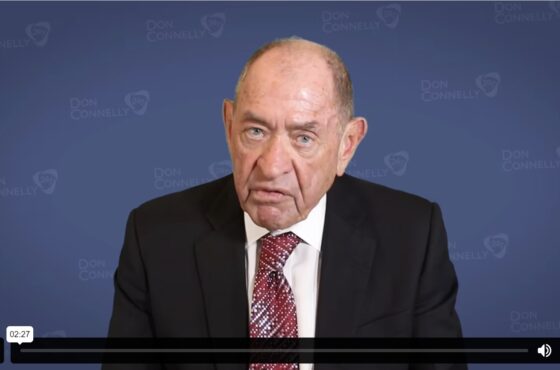How to Fill Your Pipeline Despite the Coronavirus Pandemic
 Back in 1998, physician and author Spencer Johnson wrote a best-selling book called “Who Moved My Cheese?”
Back in 1998, physician and author Spencer Johnson wrote a best-selling book called “Who Moved My Cheese?”
It’s the story of four mice who live in a maze and who have grown accustomed to cheese being deposited in the same spot every day… until one day it didn’t happen. The rest of the book explores their strategies for coping with change – both successful and unsuccessful.
The moral of the story is this: “Change happens.” It’s inevitable. Not everyone can roll with the punches, but you’ve got to adapt, improvise and overcome. You’ve got to move with the cheese.
Well, friends, the cheese just got moved!
Now, don’t get me wrong: The cheese hasn’t gone away. It’s still out there! People still want and need help managing their money. In fact, they want and need it now more than they have in years. But the way to get to the cheese is now radically different.
I know a lot of people are having to reinvent the way they do business because of the social distancing rules in a post-pandemic world. If you were an ace at pressing flesh at live meet and greets and networking events, you’ve got to make some changes. If you built your business walking into every business you can find the door to and asking for the owner, you’ve got to make some changes.
The potential clients haven’t gone away. But a lot of us will have to change the ways in which we connect with them.
“If you do not change, you can become extinct.” That’s a direct quote from Johnson’s book. So if that doesn’t motivate you, I don’t know what will.
The Coronavirus may be an extinction-level event for advisors who fail to adapt.
Here’s another point Johnson emphasizes:
“The quicker you let go of old cheese, the sooner you can find new cheese.”
Well, until things change, you can’t just go down to the nearest Chamber networking event anymore. You need to find a new way through the maze to get to your cheese.
But it could be closer than you think: You need to think of people who will take your call right now.
#1. Decide whom to call.
Build yourself a spreadsheet. Open it up in Excel, or use your contact management program. Start writing on a pad of paper. It doesn’t matter at this point – we’re just brainstorming.
- Current clients
- Close friends.
- Owners of businesses you patronize.
- Allied professionals – other financial services professionals who aren’t in direct competition.
- Buddies from the military
- Fellow charity donors
- Chamber of Commerce members
- Hobbyists
- Entrepreneurs
Once you have a bunch of them, start populating them with names.
Yeah, yeah, I hear you say “I get it. We’ve done it a hundred times.”
Well, here’s the twist:
With each group of people you identify, plan out in advance a reason for calling them in the wake of the coronavirus pandemic.
You don’t have to overthink this. It could be as simple as, “hey, I was just calling to check up on you. I know a lot of other business owners have been financially affected by this crazy situation, and I wanted to see how you were getting through it.”
Then shut up! Let them talk! If they’re in a talkative mood, sooner or later they’ll give you an opening to ask if they would be willing to meet with you to see if you can help them.
You can ask them leading questions, including:
- “Are you happy with your current financial advisor?”
- “Were you comfortable with the volatility this last quarter?”
- “What would you change?”
If they’re current clients, they may want to make some changes to their portfolio. Hopefully this isn’t the first time you’ve reached out to them since the coronavirus outbreak!
If not, they may be able to help you with referrals, or have you come in and meet with their employees and managers.
Above all, don’t try to sell just yet. You’re in listening mode. Create a conversation.
#2. Decide when to call.
Ever gone fly fishing? You’ve got to put your lure in the water when the fish are biting.
Different fish bite at different times. It’s the same with cold-calling: The time of day you call makes a huge difference in your success rate. Here’s what I’ve learned over the years:
- Accountants: Call them after the tax deadline, which is July 15th this year. They’re going to be too busy to do much until then.
- Contractors/Construction: Call them before nine or after five.
- Executives: Call before the secretary comes in, or call after 10:30, after they have their first meetings out of the way.
- Engineers: Between 4 and 5pm.
- Attorneys: Call between 11am and 2pm, or between 4 and 5pm.
- Teachers: Call after 4:30 and before 6:30.
- Bankers: Call before 10 and after 3.
- Restaurant owners: Call between 3 and 5.
Tip: Since the time of day you call matters, it also matters that you put prospecting on your schedule and stick to it. And not at the same time every day, either. You need to stagger your prospecting hours to be able to reach the most people. But if you aren’t organized and persistent about it, there’s a danger that you’ll fall victim to procrastination.
Prospecting isn’t easy. It’s grunt work. But there’s no way around it, if you want to succeed in this business. Know who you’re calling, and at what time, each day, every day. And when the clock arrives at the appointed time, you should be smiling and dialing. Don’t let anything throw you off your plan. Don’t let up. Don’t break the chain.
Now is the best time I’ve seen in years for picking up the phone and calling people. We’ve just had a major financial crisis, and a lot of people are hungry for information, and wanting someone who can help them create a plan to get through it.
The perfect time to fill that pipeline is now.
The midst of a bear or volatile market is the best time to launch a major prospecting campaign. Watch this 3-minute video to learn this Bear Market Tool Kit will help you calm clients’ fears and open new accounts during challenging times.
Gain access to the Bear Market Tool Kit today for $149!
5 videos. 3 audios. 9 pdf downloads and links to various resources. All the tools you need to expertly guide prospective and current clients through bear or volatile markets.



